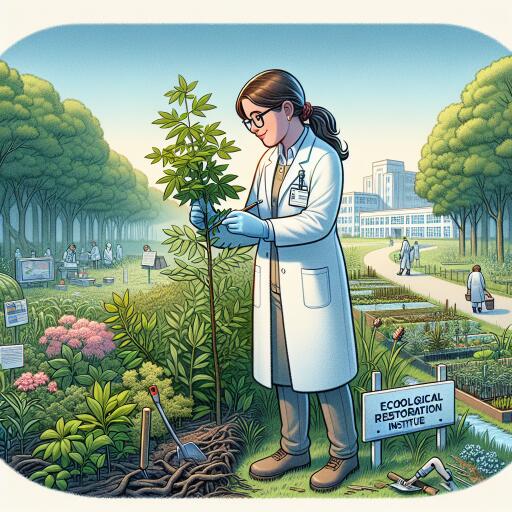
Reviving Nature: Dr. Amy Waltz and the Ecological Restoration Institute at Northern Arizona University – Today News Gazette
Ecological restoration signifies a lifeline for ecosystems that have suffered degradation, damage, or destruction. This significant endeavour not only enhances biodiversity but also strengthens the natural resilience of our environment. As awareness about the critical need to combat environmental decline spreads, ecological restoration is increasingly gaining momentum.
At the helm of these transformative efforts is Dr. Amy Waltz, a noteworthy figure in ecological restoration associated with the Ecological Restoration Institute (ERI) at Northern Arizona University. Her research delves into restoration strategies that effectively rehabilitate diverse ecosystems across the region. Dr. Waltz underscores the importance of collaboration with local communities and key stakeholders to ensure the success of restoration projects.
An integral aspect emphasized by Dr. Waltz is the involvement of local communities in ecological restoration endeavors. Engaging local populations not only imbues a sense of ownership but also integrates indigenous knowledge, which is indispensable for crafting informed land management strategies. Remarkably, statistics suggest that areas benefiting from community workshops show a 30% improvement in vegetation recovery compared to those without such engagement.
Dr. Waltz champions science-informed methodologies in ecological restoration. For instance, adaptive management strategies facilitate ongoing monitoring and offer flexibility to adapt to fluctuating environmental conditions. The adoption of drone technology for aerial mapping is becoming increasingly prevalent as it allows rapid and effective assessment of ecosystem health.
Consider the scenario of forest rehabilitation projects in Arizona post-wildfires—an occurrence that has become more frequent due to climate change factors like extended droughts and rising temperatures. Research demonstrates that proactive measures such as the quick introduction of native plant species post-fire events can curtail soil erosion by up to 40%.
The dedicated pursuits of scholars like Dr. Amy Waltz at Northern Arizona University offer invaluable insights into creating sustainable habitats that support diverse flora and fauna while safeguarding crucial resources for future generations.
By aligning scientific inquiry with community participation, ecological restoration specialists are crafting solutions that address contemporary environmental challenges efficiently and holistically. The approach promotes a synergy that combines research-driven methodologies with local insights to forge pathways towards sustainable environmental stewardship.
As we continue to confront the pressing environmental issues of our time, the integrated strategies championed by leaders in this field provide hope and direction, highlighting the importance of nurturing both the land and the communities that thrive on it.





Leave a Reply